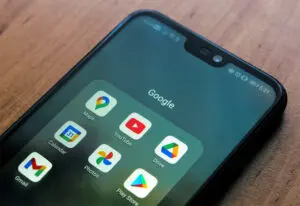
Why Digital Marketing Agencies Consider PPC Services A Powerhouse
Pay-per-click advertising (PPC) has become a versatile workhorse in the marketing world, working behind the scenes to boost search rankings. More than 7 million advertisers invested a total of $10.1 billion in PPC ads in 2017. Sales steadily increased in 2019 as digital ad spending surpassed traditional media. Once negatively judged for an obvious sales style, PPC services and ads are now as commonplace to consumers as emojis.
By 2018, a mere 1 percent of consumers felt negatively about this form of paid advertising. In fact, last year, 65 percent of paid ads were clicked with intent to purchase. So how did this relatively new kid on the marketing block become a go-to search model? How are we optimizing its strengths? And does it show any signs of slowing down?
First, let’s get back to the basics.
What is PPC advertising?
Pay-per-click is a form of advertising where businesses only get charged when someone clicks their ad. Simply put, you can buy visits to your site rather than wait for them. That’s the science—the art is in targeting.
So, is it more valuable than SEO?
It’s not a question of either-or. The good news: both paid and organic search have unique merits. They actually work best in tandem as part of a comprehensive digital advertising strategy. A detailed study from NYU found that when companies use both paid and organic search tools, profits increased 4.5% than if only using one. By using both, you’re doubling your search exposure.
How does PPC strengthen SEO ranking?
Namely, by ensuring your brand appears ahead of organic search results and occupying that highly valued, top-page real estate of the Search Engine Results Page (SERP). Though buying keywords can fast-track your ranking, you’re still competing in a dynamic marketplace, so choosing the right keywords is critical. This is where the data—and control—PPC provides becomes indispensable.
First, you can target audiences with precision
PPC networks offer access to valuable demographic factors that add muscle to your marketing choices and generate real, qualified leads. Knowing details like age, location, keyword usage, household net worth, gender, parental status, hobbies, and interests can help you narrow your audience.
Or, if you prefer, cast a wide net. Maybe you know exactly who you’re trying to target, so excluding and including specific demos creates a direct line. Maybe you want to reach a wide range of consumers or explore a new sales channel, making pay-per-click an attractive way to learn about new targets. Either way, the level of customization you can apply to customers and the freedom to explore new audiences is like having an all-access pass to any social party.
Get eyes on your brand, fast
Instead of the Field of Dreams-inspired approach of organic SEO (“If you build it, they will come…”), pay-per-click ads recruit consumers’ attention when they’re not initiating the search, taking an “I’ll come to you” style. PPC lets you instantly drive traffic to your website or social channels. One 2019 study of Google Ads statistics notes that 50% of internet traffic funneled through PPC advertisements led to sales conversions over organic web traffic. That doesn’t mean to abandon SEO. Just that PPC can do more heavy lifting for search rankings when used effectively.
Clearly track campaigns
The closest we can get to a crystal ball in marketing is using data to illuminate a path forward. A key strength of pay-per-click is the transparency it delivers on in-depth metrics, which leads to actionable changes. From the number of people seeing your ads to their post-click behavior on your website, it’s insights like these that have made PPC the leading paid search model. Unlike organic search, where it takes months to see where and how your SEO strategy has paid off, you can launch a PPC ad campaign, learn from it, and make changes in the moment.
Effortlessly make changes
The days of committing to quarterly or annual campaigns that can’t be modified are a thing of the past. PPC services offer transparency and immediacy that lets you nimbly refine micro- and macro-changes to ads, landing pages, and even your budget. These can optimize sales in three ways: identifying demand, retargeting customers who have not purchased, and re-engaging customers who have.
Make smarter long-term choices
It’s not just the short-term changes that matter. It’s also how knowledge fortifies long-term plans, produces more useful content, and efficiently uses campaign dollars.
For example, A/B testing might reveal that a certain package or call to action achieves better results for a key demo, cutting down future costs. Maybe you see new keywords that help you stand out in organic rankings, saving you the cost per click. Or what you observe in consumers’ post-click behavior leads to website and user experience tweaks rather than a site overhaul.
Knowing how to mine and leverage the insights gleaned from PPC can inform how to spend marketing dollars most effectively in the future.
It’s clear that pay-per-click services are only gaining momentum in marketing. But what sprints can we expect within the overall marathon? Like all digital mediums, it will continue to evolve as algorithms change, user habits transform, and new players enter the field—from platforms to stakeholders. While we can’t predict the future, we can ponder and prepare for what’s ahead.
Let’s consider the future of PPC
PPC services could help more small businesses thrive
According to Forbes, 50% of small businesses are using pay-per-click advertising. With its ability to capture an audience quickly, and the control of cost and targeting it offers, it’s undoubtedly an appealing choice for new businesses. This doesn’t mean big businesses will lose market share necessarily. But PPC does level the playing field in a certain sense. It lowers barriers to entry, letting businesses of all sizes compete with higher ad budgets. Along with consumers taking a more vested interest in supporting local, small, or socially-driven businesses, PPC can potentially play a role in rebalancing certain industries.
Data privacy and tracking will shake things up
As we noted, PPC gives you incredible access to valuable consumer metrics. As conversations around data privacy increase and consumers become more aware of how their data is shared (both knowingly and unknowingly), restrictions may tighten. This could mean finding new ways to leverage the insights PPC delivers.
Automation is taking over
We’ve talked before about how AI is already supporting many daily habits, and PPC is no exception. Automation will eliminate some of the tedious manual campaign tasks, but can’t replace an expert’s ability to connect the dots. As the lines between search, social, and e-commerce further blur, marketing leadership is more necessary than ever to help brands navigate the information and options PPC offers and choose the best route.
Pair PPC services with brand building to improve your brand’s presence
Thinking of PPC as intertwined with brand building (rather than just a conversion tool) makes it an even more effective way to create brand awareness and build affinity. It’s expected that consumers will seek more cross-channel experiences in the future, as they become used to seeing ads in non-traditional platforms (think back to the not-so-distant past when Instagram, YouTube, and Facebook were ad-free). PPC is poised to play a pivotal role in creating a more holistic end-to-end customer journey.
Here at Savy, we’re already thinking of how PPC services will continue to influence not only how consumers find your brand, but how they connect with it. How can pay-per-click services improve your reach?
Recent Posts
Custom Website Design and Development vs. Off-the-Shelf: What’s Right for Your Business?
Having a website that represents your brand and serves your business effectively can make or break your success in 2025. This poses the important question: Should you opt for custom […]
Read MoreHow to Rebrand Your Instagram for Better Engagement and Brand Recognition
Your Instagram presence can act as a beacon for brand recognition and customer engagement. It’s about painting a picture so compelling that your audience cannot help but be drawn to […]
Read MoreFrom Clicks to Conversions: The Science of High-Performing Digital Ads
The journey from interest to purchase is often paved with digital advertisements. However, not all digital ads are crafted equally. While some fade into the background, others command attention and […]
Read MoreBrand Consistency Examples That Will Make You Rethink Your Marketing Strategy
A consistent and strategic brand identity across all platforms is not just beneficial; it’s essential. By exploring real-world brand consistency examples, we uncover the immense power of maintaining a coherent […]
Read More3 Ways to Transform Blogs With SEO and Make Google Love Your Content
As marketers and business owners, our goal is to ensure the blogs we publish confidently stride into the spotlight of Google’s top search results. Achieving this requires great content, but […]
Read More



